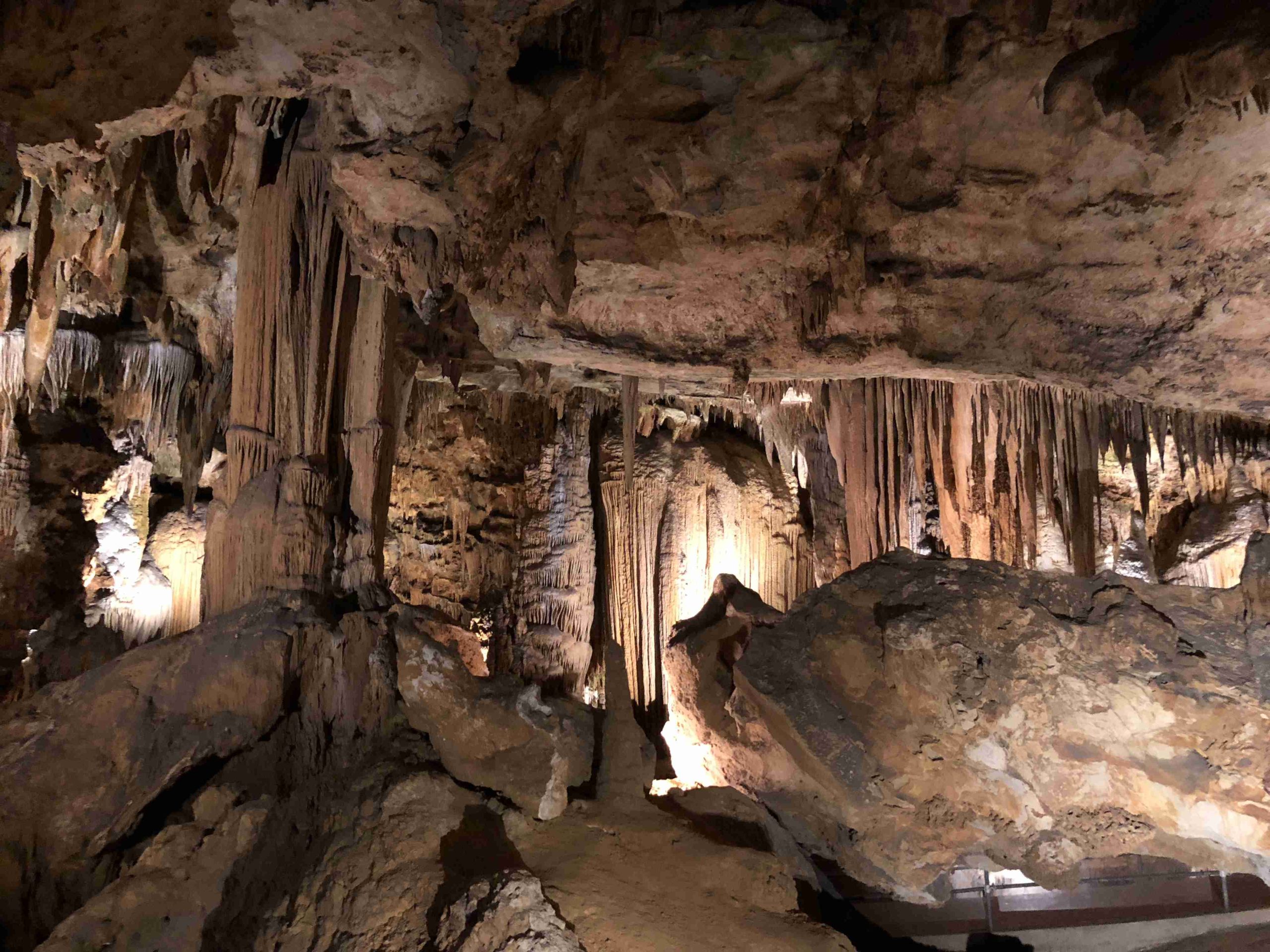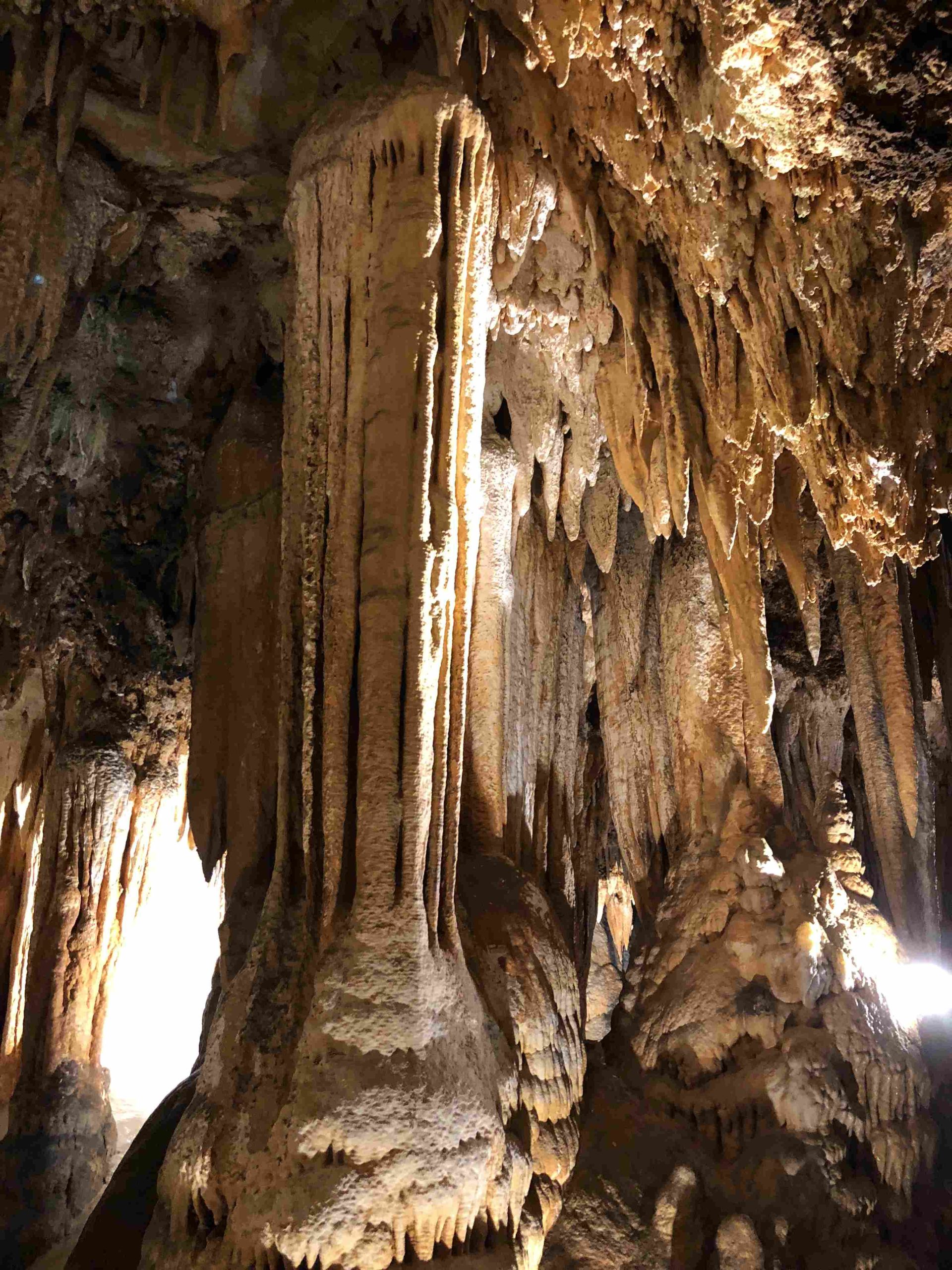Luray Caverns, located in Virginia, is renowned for its stunning stalagmites and stalactites. These natural formations, created over millions of years, showcase the intricate beauty of underground geology. The caverns feature an array of impressive structures, including the 35-foot Empress Column and the unique Double Column. With growth rates of approximately 1 inch every 120 years, these formations offer a glimpse into Earth’s slow but constant geological processes.
What Are Stalagmites and Stalactites?

Stalagmites and stalactites are mineral deposits formed in caves over long periods. They are primarily composed of calcium carbonate (calcite) that precipitates from water rich in carbon dioxide. The process involves the release of carbon dioxide from the water, allowing the calcium carbonate to deposit on cave surfaces.
How Do They Differ?
- Stalactites: These formations hang from the cave ceiling, growing downward as water drips and deposits minerals.
- Stalagmites: These grow upward from the cave floor, formed by mineral-rich water dripping from above.
What Makes Luray Caverns’ Formations Unique?

Luray Caverns boasts an impressive collection of stalagmites and stalactites, each with its own characteristics:
- The Empress Column: A 35-foot high, rose-colored stalagmite
- The Double Column: Two fluted pillars, one 25 feet high and the other 60 feet high
- Giant’s Hall Stalactites: Exceeding 50 feet in length
- The Fallen Stalactite: Detached from the ceiling 7,000 years ago due to an earthquake
How Fast Do Luray Caverns’ Stalagmites and Stalactites Grow?
The growth rate of stalagmites and stalactites in Luray Caverns is remarkably slow:
- Approximately 1 inch of growth every 120 years
- This slow pace contributes to the formations’ delicate and intricate structures
What Factors Influence the Color of These Formations?
The color variations in Luray Caverns’ stalagmites and stalactites are due to various mineral impurities:
| Color | Mineral Impurity |
|---|---|
| White | Pure calcium carbonate |
| Red/Yellow | Iron and iron-stained clays |
| Black | Manganese dioxide |
| Blue/Green | Copper compounds |
How Are Different Types of Formations Created in Luray Caverns?
- Stalactites:
- Formed by water dripping from the cave ceiling
- Build up gradually over time
-
Can vibrate when struck, used in the Great Stalacpipe Organ
-
Stalagmites:
- Formed by excess water dripping to the floor
- Build up from the ground towards the ceiling
-
Can eventually meet stalactites to form columns
-
Flowstone:
- Sheet-like structures resembling curtains or draperies
-
Formed by the flow of mineral-rich water over cave surfaces
-
Columns:
- Created when stalactites and stalagmites meet
- Often appear as large, fluted pillars
What Can Visitors Expect During a Tour of Luray Caverns?
Visitors to Luray Caverns can experience:
- Guided tours lasting approximately 1 hour
- General admission prices around $30-$40 per adult (discounts available)
- Paved paths and elevators for accessibility
- Live demonstrations of the Great Stalacpipe Organ
- Seasonal educational programs and special events
How Does the Great Stalacpipe Organ Relate to the Caverns’ Formations?
The Great Stalacpipe Organ is a unique feature of Luray Caverns:
- Uses stalactites as a musical instrument
- Demonstrates the cavern’s exceptional acoustics
- Included in guided tours with live, automated demonstrations
What Are Some Notable Measurements of Luray Caverns’ Formations?
Luray Caverns features several impressive formations:
- The Empress Column: 35 feet (11 meters) high
- The Double Column: One pillar 25 feet (8 meters), the other 60 feet (18 meters)
- Stalactites in Giant’s Hall: Exceeding 50 feet (15 meters) in length
How Do Scientists Study the Growth of These Formations?
Scientists study the growth of stalagmites and stalactites through various methods:
- Measuring current drip rates and mineral content of water
- Analyzing the chemical composition of the formations
- Using radiometric dating techniques to determine age
- Comparing historical records and photographs
What Conservation Efforts Protect Luray Caverns’ Stalagmites and Stalactites?
To preserve these delicate formations, Luray Caverns implements several conservation measures:
- Controlled access through guided tours
- Prohibition of touching or removing any cave formations
- Monitoring of environmental conditions within the caverns
- Educational programs to raise awareness about cave conservation
How Do Luray Caverns’ Formations Compare to Those in Other Caves?
While each cave system is unique, Luray Caverns’ formations stand out due to:
- The size and variety of its stalagmites and stalactites
- The presence of the Great Stalacpipe Organ
- The caverns’ overall accessibility and well-preserved state
Luray Caverns’ stalagmites and stalactites offer a fascinating glimpse into the slow, patient work of nature. These underground masterpieces continue to captivate visitors and scientists alike, serving as a testament to the Earth’s geological processes and the beauty that can be found beneath our feet.
References:
1. https://luraycaverns.com/news/how-to-grow-a-cave/
2. https://en.wikipedia.org/wiki/Luray_Caverns
3. https://www.pbs.org/newshour/science/mother-nature-pentagon-mathematician-created-worlds-largest-instrument

